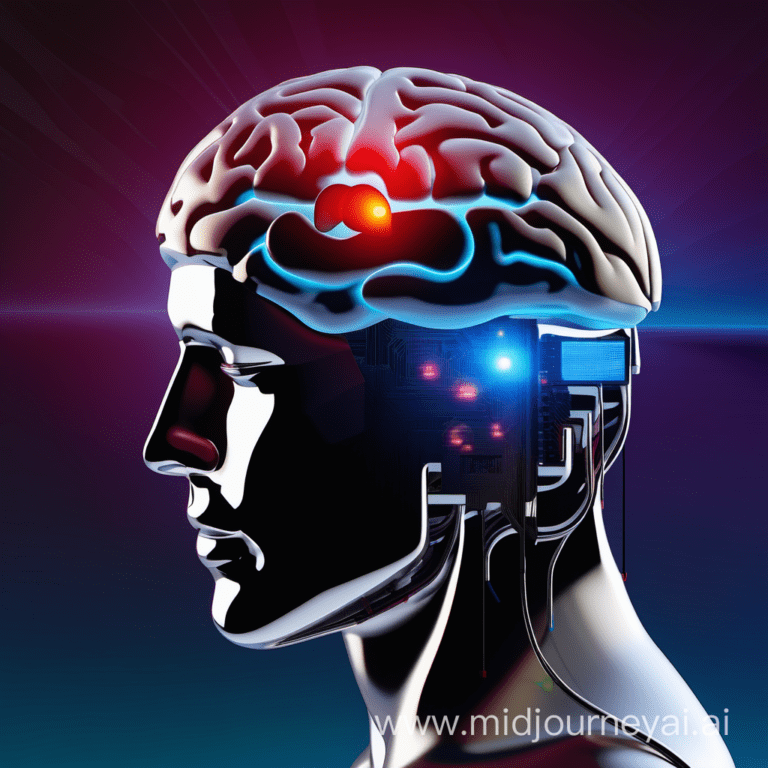Can Artificial Intelligence Lie? Debunking the Myths Behind AI’s “Deception”
Introduction
In the age of artificial intelligence, questions about its capabilities often spark intriguing debates. One of the most pressing inquiries is whether AI can lie. In this article, we will delve deep into this topic, exploring the nuances of AI-generated information and distinguishing between deception and a phenomenon often misconstrued as lying: hallucination. By understanding the mechanisms behind AI-generated content, we can demystify the myths surrounding artificial intelligence.
Can Artificial Intelligence Lie? Debunking the Myths Behind AI’s “Deception”
Artificial Intelligence (AI) has become an integral part of our lives, from voice assistants like Siri and Alexa to self-driving cars. However, as AI continues to evolve and become more advanced, there are concerns about its ability to lie or deceive humans. In this blog post, we will debunk the myths behind AI’s “deception” and explore the truth behind this controversial topic.
Understanding AI’s Capabilities
Before we delve into the question of whether AI can lie, it’s important to understand how AI works. AI systems are designed to analyze vast amounts of data, learn from patterns, and make predictions or decisions based on that information. They do not possess human-like consciousness or emotions, making it incapable of conscious deception.
However, AI’s output can sometimes appear misleading due to its reliance on the data it has been trained on.
Hallucination vs. Lying
AI-generated content, especially in text or image generation, might present information that seems deceptive. In reality, this phenomenon often stems from “hallucination,” where the AI generates outputs based on patterns within the data it has been trained on. These patterns can occasionally result in the creation of false or misleading information, akin to a hallucination rather than a deliberate lie

Why does AI generate false statements?
There are a few reasons why AI may generate false statements:
- AI is trained on imperfect data. As mentioned above, AI is trained on large datasets of text and code. This data may contain inaccurate or outdated information, which can lead AI to generate false statements.
- AI does not have a complete understanding of the world. AI is still under development, and it does not have a complete understanding of the world. This can lead AI to make false statements about things that it does not fully understand.
- AI is not perfect. AI is a complex technology, and it is not perfect. It is susceptible to errors and mistakes, which can lead it to generate false statements.
- A large language model (LLM) may generate a text passage that is grammatically correct and coherent, but factually incorrect.
- An image generation model may generate an image that is realistic but does not exist in the real world.
- A speech recognition model may transcribe a conversation that is factually incorrect.
The Role of Human Intervention
While AI systems cannot lie on their own, they can be programmed or manipulated to produce misleading or inaccurate information. This is where human intervention comes into play.
AI algorithms are created by humans and are only as reliable and accurate as the data they are trained on. If the data used to train an AI system is biased or incomplete, it can lead to misleading or biased results.
Additionally, AI systems can be programmed to prioritize certain outcomes or objectives, which may result in biased or skewed information. However, this is not the AI system lying, but rather a reflection of the biases or intentions of the human programmers.
While AI-generated content can’t lie, it is crucial to fact-check the information it produces. Humans must critically analyze AI-generated outputs, cross-referencing them with reliable sources. Fact-checking plays a vital role in ensuring the accuracy of information, especially when AI-generated content is involved in journalism, research, or decision-making processes.

Examples of AI-Generated Content
AI-generated content is prevalent in various fields, including journalism, creative writing, and content creation. For instance, AI-powered news articles might inadvertently generate misleading headlines due to hallucinated information. Similarly, AI-generated artwork could incorporate elements that, while imaginative, might not align with reality. These examples underline the importance of discernment when interpreting AI-generated outputs.
Ethics and Transparency
As AI technology continues to advance, there is a growing need for ethical considerations and transparency. It is crucial for AI developers and programmers to ensure that their systems are fair, unbiased, and transparent.
Organizations and researchers are working on developing frameworks and guidelines for ethical AI development. This includes addressing issues such as data privacy, algorithmic bias, and accountability. Addressing biases in training data, verifying outputs, and promoting ethical AI practices are essential steps toward responsible AI deployment.
The Future of AI
While AI systems do not have the ability to lie, there are ongoing debates and discussions about the ethical implications of AI technology. As AI becomes more integrated into our daily lives, it is important to address these concerns and ensure that AI systems are designed and used responsibly.
Ultimately, the responsibility lies with humans to develop and use AI technology in a way that is fair, transparent, and accountable.
Conclusion
In conclusion, the idea that AI can lie or deceive humans is a myth. AI systems do not possess consciousness or emotions and are incapable of intentional deception. However, human intervention and biases can lead to misleading or inaccurate information. It is important for AI developers and programmers to prioritize ethics, transparency, and accountability in order to address these concerns and ensure the responsible development and use of AI technology.
Fact-checking and critical analysis are indispensable tools in discerning the accuracy of AI-generated content. By understanding the nature of AI and its limitations, we can navigate the vast realm of artificial intelligence with clarity and confidence, fostering a future where technology serves humanity responsibly and ethically.
If you enjoyed this article, please take some time to browse InnoVirtuoso.com and find some more interesting reads, additionally, You’re feedback is always welcome. Drop us a comment, we are eager to read them.







